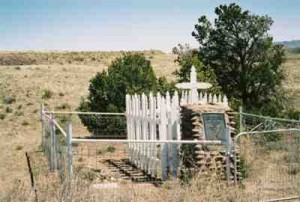Essay by Sharon O’toole
Environment – June 2007 – Colorado Central Magazine
IMAGINE A PROPOSAL to scatter millions of pounds of poisoned meat around the United States, close to human populations. Much of it would be accessible to scavengers including eagles, hawks, coyotes, foxes and badgers, as well as to dogs and cats. An animal feeding on the poisoned meat would probably die.
This scenario is likely, now that the opponents of slaughtering horses are having their way. For many years, unwanted horses have routinely been sent to slaughter. Some horse meat becomes pet food, but much goes for export to Europe for human consumption. Horse-slaughter opponents tend to think of horses as beloved pets, much like cats or dogs, and in America, the last thing we would do is eat a pet. In Europe, however, horse meat is a staple, and it’s found on many menus.
The opponents of horse slaughter have concentrated their efforts on stopping the export of horse meat for human consumption. Since “filet of filly” is a dish that repels Americans, this argument has generated some sympathy. Exporting American horses to feed foreign palates has also been labeled unpatriotic, with critics calling the practice contrary to American values.
Now, the poison-meat scenario has become the alternative to government-regulated horse slaughter. On March 29, the last U.S. horse-slaughter plant was closed down by order of the U.S. District Court of the District of Columbia. A circuitous path led to shutting the doors — and summarily dismissing 55 employees — at the DeKalb, Ill., plant. Until a few months ago, three plants operated in the United States, and last year they slaughtered about 100,800 horses.
What do slaughter opponents advocate? Their Political Action Committee, aptly called HOOFPAC, says it all in a slogan: “Keep America’s horses in the stable and off the table.” This is a catchy phrase, but it doesn’t address whose stable, and at whose expense. Adoptive homes are not available for all unwanted horses today, and the current horse population is an estimated 9.2 million — more horses are living now than in 1900, before the automobile began replacing the animals as transportation.
In the flesh-and-blood world of horse ownership, horses, whether beast of burden or beloved pet, must sometimes be put to death. The animal may be old and infirm, injured or dangerous to people. Slaughter opponents call for “humane euthanasia” by a veterinarian, at a cost of $100 to $300, which is a lot to pay for a horse that might bring as little as $300-$500 at auction, while supporting an unwanted horse for a year costs $3,000 a year in many areas.
Once a horse is dead, what then? The owner is left to dispose of a 1,200-pound carcass that has been saturated with a toxic substance. Most states require burial of euthanized animals at least two feet deep, away from water. Many areas also regulate animal burial, so a backyard might not be suitable. Slaughter opponents advocate rendering, boiling the animal and extracting what’s useful, but it is unavailable in most parts of the country, and unsuitable for poisonous remains. A common solution is to pay the veterinarian to haul the carcass to the public landfill.
An internet search for “horse disposal” brings advice on cremation — expensive where available — and grief counseling. No one addresses the reality or additional expense of disposing of a large contaminated carcass.
EXISTING FEDERAL animal-slaughter regulations require humane handling so a horse does not suffer. Opponents label the process as cruel, but a horse is killed with a handheld machine that fires a bolt into the brain, causing instant death. Inspectors are on-site to ensure that the animals are treated humanely, and plants have been designed to minimize stress on the horses. The arguments of slaughter opponents, however, are emotional: No one likes to think about the details of an animal dying.
Like it or not, all animals die. We live in a world of limited resources. American horses, prized for their size and health, convert sunshine, grass and grain into flesh and bone. When it is time for those horses to die, it makes sense that they go on to feed people and pets. Poisoning horses and then dumping them in a landfill makes no sense at all.
Sharon O’Toole is a contributor to Writers on the Range, a service of High Country News. She is a rancher and writer in Savery, Wyoming.

